 W
WThis article on the History of Afghanistan since 1992 covers the time period from the fall of the Najibullah government in 1992 to the ongoing international military presence in Afghanistan.
 W
WAn emergency loya jirga was held in Kabul, Afghanistan between 11 and 19 June 2002 to elect a transitional administration. The loya jirga was called for by the Bonn Agreement and Bush administration. The agreement was drawn up in December 2001 in Germany. Conducted under United Nations auspices, the talks at Bonn sought a solution to the problem of government in Afghanistan after the US ousted the Taliban government.
 W
WParliamentary elections were held in Afghanistan alongside provincial elections on 18 September 2005. Former warlords and their followers gained the majority of seats in both the lower house and the provincial council. Women won 28% of the seats in the lower house, six more than the 25% guaranteed in the 2004 constitution.
 W
WOn 11 June 2012, two moderate earthquakes struck northern Afghanistan, causing a large landslide. The landslide buried the town of Sayi Hazara, trapping 71 people. After four days of digging, only five bodies were recovered and the search was called off. Overall, 75 people were killed and 13 others were injured.
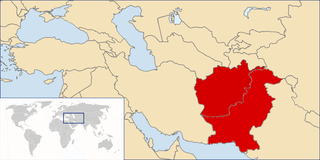 W
WIn August 2013, Pakistan and eastern Afghanistan experienced heavy rain that led to flash flooding. More than 180 died as a result of the floods.
 W
WPresidential elections were held in Afghanistan on 5 April 2014, with a second round held on 14 June. Incumbent President Hamid Karzai was not eligible to run due to term limits. The registration period for presidential nominations was open from 16 September 2013 until 6 October 2013. A total of 27 candidates were confirmed to be running for office. However, on 22 October Afghanistan's Independent Election Commission disqualified 16 of the candidates, leaving only 11 in the race. By April 2014 three candidates gave up the race and decided to support some of the eight remaining candidates. Opinion polls showed Abdullah Abdullah and Ashraf Ghani as the front-runners and indeed the results of the first round of the election had Abdullah in the lead and Ghani behind him. The second set of results came after the run-off on 14 June, two months after the first round. Preliminary results were expected on 2 July and the final result on 22 July. However, widespread accusations of fraud delayed these results. As a result, John Kerry, then United States Secretary of State, mediated the negotiations between the two final candidates, Ghani and Abdullah. After a series of negotiations and talks between Ghani, Abdullah and Kerry, the two candidates agreed to sign an Agreement to form a National Unity Government based on 50–50 power sharing. As a result of that political agreement, a separate position was created for Abdullah as Chief Executive. The National Unity Government's term will run out after the next Afghan presidential election is held in September 2019.
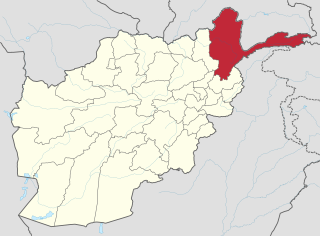 W
WOn 2 May 2014, a pair of mudslides occurred in Argo District, Badakhshan Province, Afghanistan. The death toll is uncertain, the number of deaths varying from 350 to 2,700. Around 300 houses were buried and over 14,000 were affected. Rescuers responding to the initial mudslide were struck by a second mudslide, which hampered rescue efforts.
 W
WOn February 24–28, 2015, avalanches in Panjshir Province, Afghanistan killed at least 310 people, and another 129 were wounded. 1,000 Afghani troops were deployed to Panjshir Province to assist rescue efforts. According to the acting governor of Panjshir, Abdul Rahman Kabiri, these avalanches were the worst Afghanistan had seen in three decades.
 W
WOn 23 April 2015, a landslide occurred in the Khawahan district of Badakhshan Province in Afghanistan. Around 100 houses were destroyed and 52 people were killed by the landslide. A second landslide occurred on 26 April, displacing 120 families.
 W
WThe 2017 Afghanistan avalanches were a series of avalanches that struck villages on the Afghanistan–Pakistan border between February 4 and 6, 2017. More than 100 people reportedly died in the disaster, including more than 50 people in Nuristan Province and at least 19 people in the neighbouring Badakhshan area of Pakistan's Chitral region. Dozens of homes and fhams were destroyed, and hundreds of animals died due to the avalanches. In Pakistan, the affected areas included regions of Balochistan, Mastung, Kalat and Kharan.
 W
WParliamentary elections were held in Afghanistan on Saturday 20 October 2018 to elect members of the House of the People. They had originally been scheduled for 15 October 2016, but were initially postponed to 7 July 2018, and then again to 20 October. Much of the prelude to the elections focused on the debate over reforming the country's electoral laws. The current system is one of single non-transferable vote. Kandahar's election was held on October 27. Polls were also delayed in Ghazni, due to an intensifying Taliban insurgency in the province, and as of September 2020 still have not been held. The new Parliament was inaugurated on April 26, 2019.
 W
WThe 2009 Afghan avalanches occurred near Kabul, Afghanistan on 16 January 2009. At least ten people were killed and twelve vehicles and machinery used to clear the road of snow were swept away when the avalanche struck a highway. Forty people were rescued, eleven of whom were injured by the avalanches. The avalanches struck the Salang tunnel, the main highway linking southern and northern Afghanistan in the middle of the Hindu Kush mountains, at an altitude of 4,450 metres (14,600 ft). Searchers spent the next two days and beyond locating the victims.
 W
WThis article covers the Afghan history between the Taliban's conquest of Kabul and their establishing of the Islamic Emirate of Afghanistan on 27 September 1996, and the U.S. and U.K. invasion of Afghanistan on 7 October 2001: a period that was part of the Afghan civil war that had started in 1989, and also part of the war in Afghanistan that had started in 1978.
 W
WThe Afghan Interim Administration (AIA), also known as the Afghan Interim Authority, was the first administration of Afghanistan after the fall of the Taliban regime and was the highest authority of the country from 22 December 2001 until 13 July 2002.
 W
WAn election to the office of President of Afghanistan was held on October 9, 2004. Hamid Karzai won the election with 55.4% of the votes and three times more votes than any other candidate. Twelve candidates received less than 1% of the vote. It is estimated that more than three-quarters of Afghanistan's nearly 12 million registered voters cast ballots. The election was overseen by the Joint Electoral Management Body, chaired by Zakim Shah and vice-chaired by Ray Kennedy, an American working for the United Nations.
 W
WPresidential elections were held in Afghanistan on 20 August 2009. The election resulted in victory for incumbent Hamid Karzai, who won 49.67% of the vote, while his main rival Abdullah Abdullah finished second with 30.59% of the vote.
 W
WThe Transitional Islamic State of Afghanistan (TISA), also known as the Afghan Transitional Authority, was the name of a temporary administration of Afghanistan put in place by the loya jirga of June 2002. It succeeded the original Islamic State of Afghanistan and preceded the current Islamic Republic of Afghanistan.
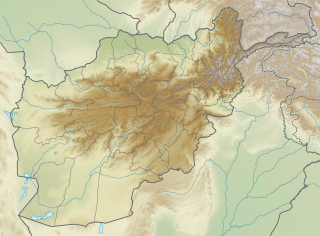 W
WThe February 1998 Afghanistan earthquake occurred at 19:03 local time near the Afghanistan-Tajikistan border. The strike-slip shock had a moment magnitude of 5.9 and a maximum Mercalli intensity of VII. With several thousand dead and hundreds injured, the event's effects were considered extreme. It was felt at Tashkent and Dushanbe, and aftershocks continued for the next seven days.
 W
WAn earthquake occurred in northern Afghanistan on 30 May 1998, at 06:22 UTC in the Takhar Province with a moment magnitude of 6.5 and a maximum Mercalli intensity of VII. At the time, the Afghan Civil War was underway; the affected area was controlled by the United Islamic Front for the Salvation of Afghanistan.
 W
WThe 2012 Afghanistan Quran burning protests was a series of protests of varying levels of violence which took place early in 2012 in response to the burning of Islamic religious material by soldiers from the United States Bagram Air Base in Afghanistan. On 22 February 2012, U.S. troops at Bagram Base disposed of copies of the Quran that had been used by Taliban prisoners to write messages to each other. As part of the disposal, parts of the books were burned. Afghan forces working at the base reported this, resulting in outraged Afghans besieging Bagram AFB, raining it with petrol bombs and stones. After five days of protest, 30 people had been killed, including four Americans. Over 200 people were wounded. International condemnation followed the burning of copies of the Quran, on 22 February 2012, from the library that is used by inmates at the base's detention facility. The protests included domestic riots which caused at least 41 deaths and at least 270 injuries.
 W
WThe 2009 Afghanistan earthquake was a dip-slip doublet earthquake occurred in eastern Afghanistan, with an initial shock of magnitude of 5.2 Mw at 01:57:51 April 17 local time, with a second shock of 5.1 Mw occurring several hours later. The maximum Mercalli intensity was V (Moderate).
 W
WThe 1998 Ariana Afghan Airlines crash was a flight operated by an Ariana Boeing 727-200. The flight crashed on approach into Kabul killing all 45 aboard. The flight may have been involved in illegal smuggling and Islamic militant operations, as Ariana Afghan Airlines was back then controlled by the Taliban-led Islamic Emirate of Afghanistan regime.
 W
WThe 2005 Hindu Kush earthquake hit northeastern Afghanistan with a magnitude of 6.5 on December 12 at 21:47 (UTC). According to the United States Geological Survey's ShakeMap and Did You Feel It? products, the maximum Mercalli intensity was VI (Strong) at Chitral. Five people were killed in the Hindu Kush region and landslides blocked several roads near Bagh, Kashmir. The earthquake occurred some 65 miles away from Faizabad, a city in the Hindu Kush mountains, but it could be felt in many neighboring areas. It could even be felt about 200 miles away in Islamabad, Pakistan. The quake was strong enough to trigger panic among survivors of October's devastating earthquake, who came out from their makeshift shelters in freezing temperatures. Although magnitude-6 earthquakes typically cause severe damage, this quake caused relatively little due to the fact that it occurred deep underground.
 W
WAfter Operation Enduring Freedom in which the Taliban government was toppled in Afghanistan, in December 2001, the German city of Bonn hosted a conference of Afghan leaders at Hotel Petersberg, to choose the leader of an Afghan Interim Authority – widely known as the Bonn Conference. The Conference chose Hamid Karzai, who was subsequently elected President in 2004. Karzai subsequently appointed many of the anti-Taliban allies and regional leaders to senior posts within the interim government, or to senior posts in the Provincial governments.
 W
WThe Islamic Emirate of Afghanistan was a totalitarian Islamic state established in September 1996, when the Taliban began their governance of Afghanistan after the fall of Kabul. At its peak, the Taliban regime controlled approximately 90% of the country, whereas remaining regions in the northeast were held by the Northern Alliance, which maintained broad international recognition as a continuation of the Islamic State of Afghanistan. After the September 11 attacks and subsequent declaration of a "War on Terror" by the United States, international opposition to the regime drastically increased, with diplomatic recognition from the United Arab Emirates and Pakistan being rescinded. The Islamic Emirate ceased to exist on 17 December 2001 after being overthrown by the Northern Alliance, which had been bolstered by the ISAF coalition established after a U.S.-led invasion of the country two months prior.
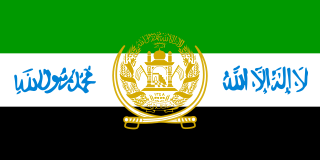 W
WThe Islamic State of Afghanistan was the government of Afghanistan, established by the Peshawar Accords on 26 April 1992 by many, but not all, mujahideen Afghan parties, after the fall of the communist government. From 1996, it became a government in exile when the Taliban took power of Kabul and established the mostly unrecognized Islamic Emirate of Afghanistan. The Islamic State was in control of the country again after the Taliban government was overthrown by the United States in 2001 after the invasion. In 2002 it was succeeded by the Transitional Islamic State of Afghanistan.
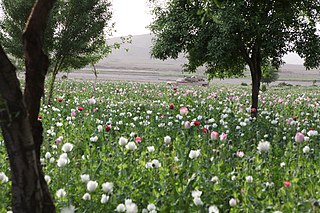 W
WAfghanistan has been the world's leading illicit opium producer since 2001. Afghanistan's opium poppy harvest produces more than 90% of illicit heroin globally, and more than 95% of the European supply. More land is used for opium in Afghanistan than is used for coca cultivation in Latin America. In 2007, 93% of the non-pharmaceutical-grade opiates on the world market originated in Afghanistan. This amounts to an export value of about US$4 billion, with a quarter being earned by opium farmers and the rest going to district officials, insurgents, warlords, and drug traffickers. In the seven years (1994–2000) prior to a Taliban opium ban, the Afghan farmers' share of gross income from opium was divided among 200,000 families. As of 2017, opium production provides about 400,000 jobs in Afghanistan, more than the Afghan National Security Forces. The opium trade spiked in 2006 after the Taliban lost control of local warlords. In addition to opium, Afghanistan is also the world's leading producer of hashish.
 W
WThe Karzai administration was the government of Afghanistan under President Hamid Karzai, who became the head of state of Afghanistan in December 2001 after the Taliban government was overthrown. Karzai was appointed at the 2002 Loya Jirga as the Interim President of the Afghan Transitional Administration. After the 2004 Afghan presidential election, he became the President of Afghanistan.
 W
WThe 2010 Salang avalanches consisted of a series of at least 36 avalanches that struck the southern approach to the Salang Tunnel, north of Kabul. They were caused by a freak storm in the Hindu Kush mountains.
 W
WThe Transitional Islamic State of Afghanistan (TISA), also known as the Afghan Transitional Authority, was the name of a temporary administration of Afghanistan put in place by the loya jirga of June 2002. It succeeded the original Islamic State of Afghanistan and preceded the current Islamic Republic of Afghanistan.